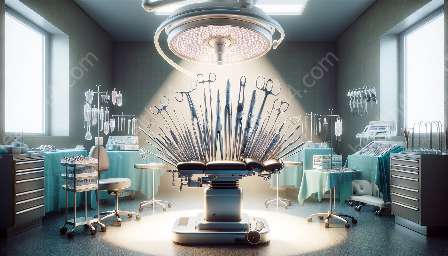When it comes to surgical procedures, the importance of using the right medical devices and equipment cannot be overstated. Among these tools, cautery stands out as a crucial instrument that plays a significant role in various medical applications.
The Significance of Cautery in Surgery
Cautery refers to the practice of using heat, electricity, or chemicals to destroy or coagulate tissues and control bleeding during surgical procedures. Its significance lies in its ability to ensure precise and controlled tissue manipulation, thereby minimizing the risk of excess bleeding and promoting efficient tissue healing.
Types of Cautery
There are several types of cautery devices, each designed for specific medical purposes. These include:
- Electrosurgical Cautery: This type uses high-frequency electric current to achieve coagulation or cutting of tissues. It is a versatile and widely used form of cautery in various surgical settings.
- Hot Cautery: Using heat from a metal tip, hot cautery devices are employed for precise cauterization of tissues, particularly in dermatological and specialized surgeries.
- Cold Cautery: Unlike its hot counterpart, cold cautery devices use chemicals or low temperatures to coagulate and seal blood vessels. They are often favored for delicate procedures involving sensitive tissues.
Applications of Cautery
Cautery finds application across a broad spectrum of surgical specialties:
- General Surgery: In procedures such as appendectomies and bowel surgeries, cautery is pivotal for controlling bleeding and manipulating tissues with precision.
- Plastic Surgery: Cautery plays a crucial role in cosmetic and reconstructive surgeries, where precise tissue manipulation and control of bleeding are paramount.
- Orthopedic Surgery: From joint replacements to spinal surgeries, cautery aids in ensuring hemostasis and precise tissue management, contributing to successful outcomes.
Advancements in Cautery Technology
The field of surgical instruments, including cautery devices, continues to witness significant advancements. Improved ergonomics, precision control, and integration with surgical platforms have enhanced the effectiveness and safety of cautery in modern medical practices.
Furthermore, the advent of bipolar cautery systems has introduced a new level of precision and safety by allowing controlled energy delivery, minimizing collateral thermal damage to surrounding tissues, and reducing the risk of inadvertent electrical injury.
Conclusion
In conclusion, cautery stands as a vital component of surgical instrumentation and medical devices and equipment. Its ability to provide precise tissue manipulation and hemostasis contributes to the success and safety of various surgical procedures across different medical specialties.
As medical technology continues to evolve, we can anticipate further innovations in cautery devices, ultimately enhancing their efficacy and supporting favorable patient outcomes.


